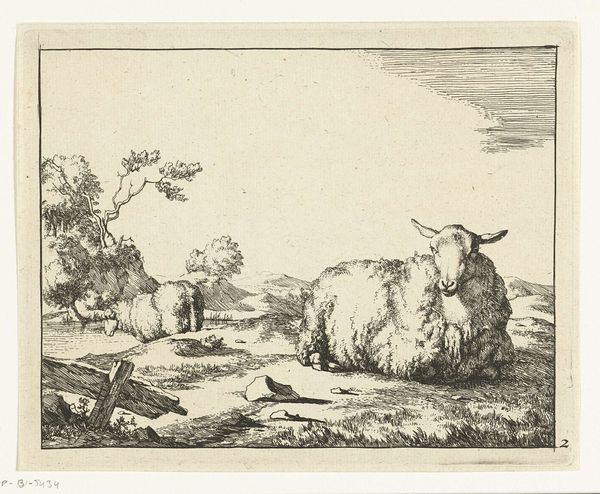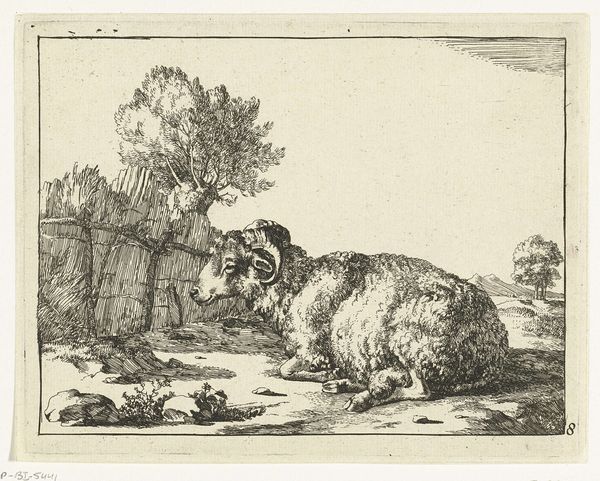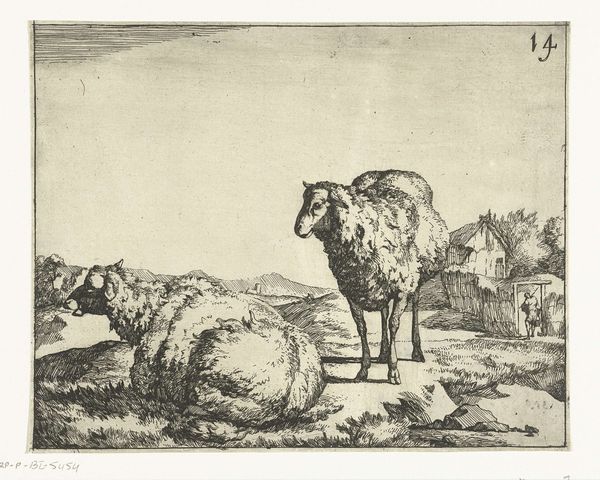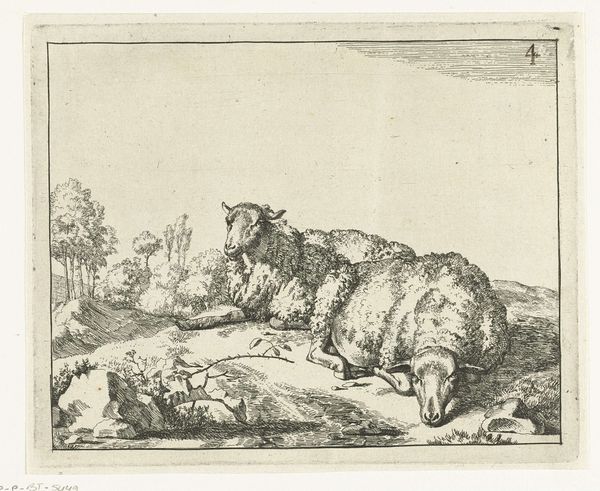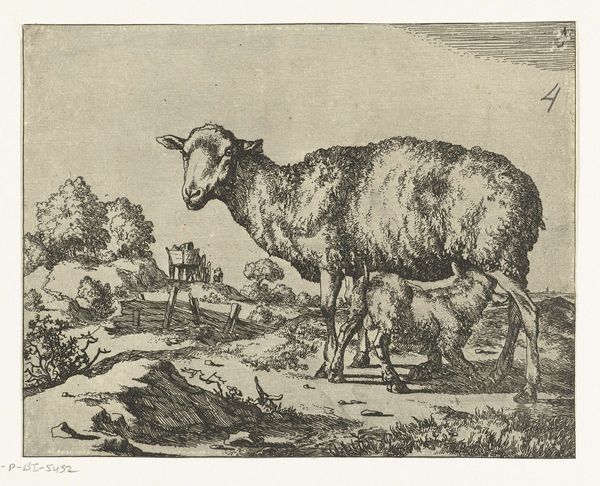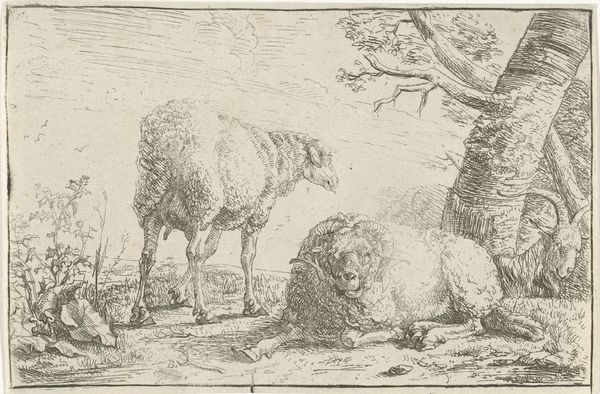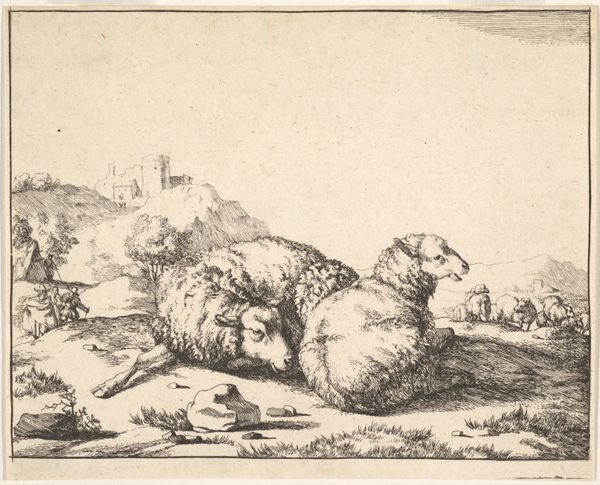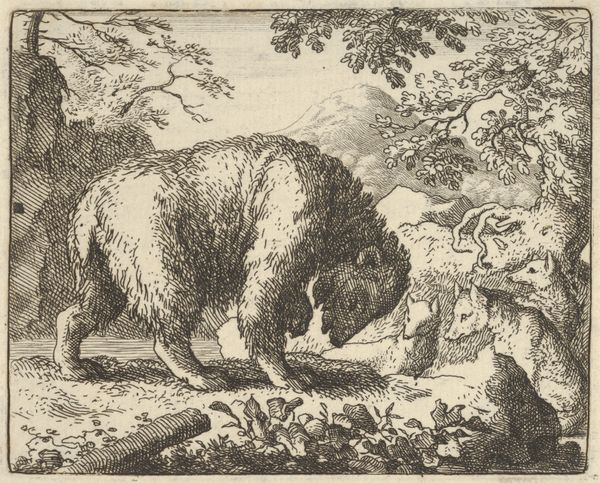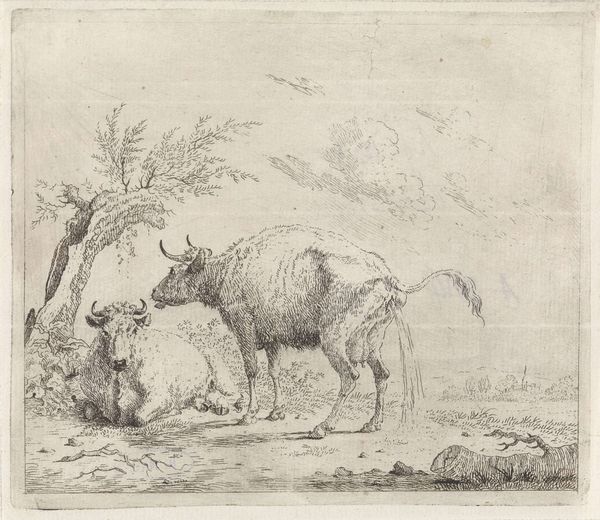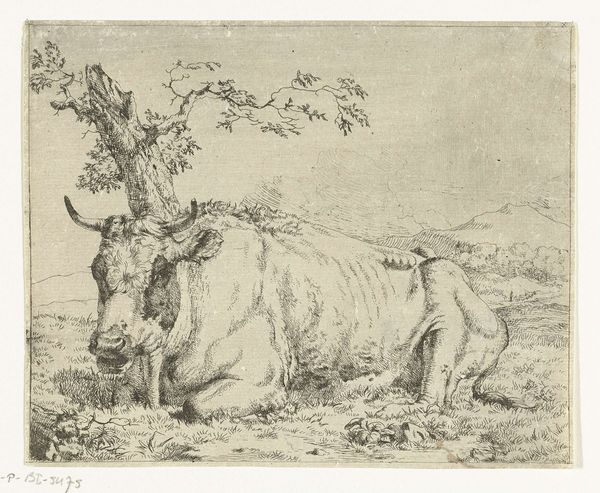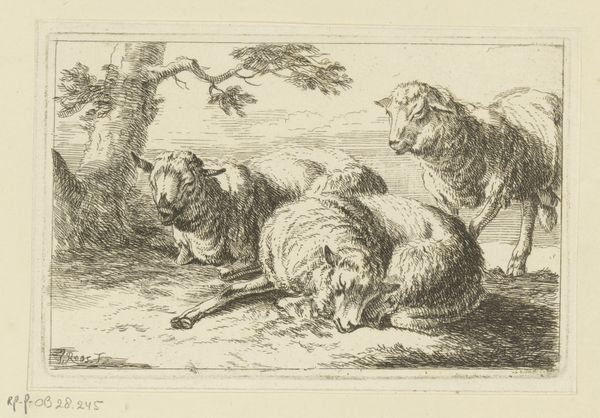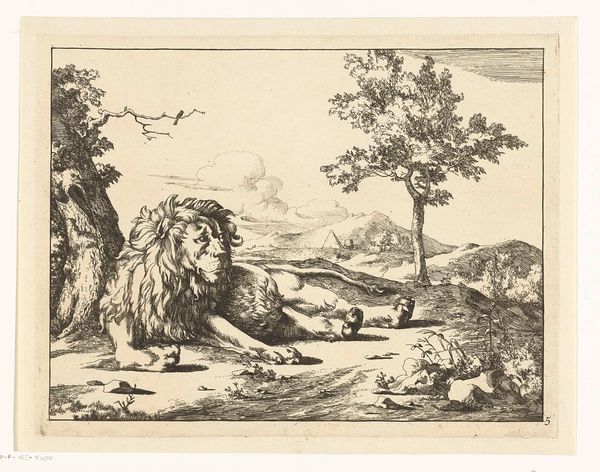
drawing, ink
#
drawing
#
animal
#
dutch-golden-age
#
landscape
#
figuration
#
ink
#
genre-painting
#
realism
Dimensions: height 117 mm, width 148 mm
Copyright: Rijks Museum: Open Domain
Curator: Here we have "Two Sheep, Lying Down, with Shepherd in the Background," a drawing made with ink by Marcus de Bye sometime around 1664 to 1761. What is your first impression? Editor: The contrasting textures jump out at me. The sheep are rendered with a tangible wooliness, while the background details—the shepherd, the trees—are more gestural, almost ephemeral. It creates an interesting visual tension. Curator: Indeed. The choice of ink as the medium speaks volumes. Its accessibility made art production more democratic, reflecting a broader cultural shift towards valuing depictions of everyday life and labor. Consider the relationship between the Dutch Golden Age and its burgeoning textile industry. Editor: A compelling point. Though the artist uses line to create areas of light and shadow, it's a very restricted palette overall. What's interesting, though, is how much information can still be conveyed. Observe the diagonal lines indicating perspective that pulls the eye of the viewer from foreground to background, anchoring the recumbent sheep. Curator: Precisely! These detailed studies were often crucial for workshops. The animal drawings could be templates, easily reproducible for tapestries, tiles, or even teaching aids. They served a practical function. Editor: You're right. But they also elevate the pastoral genre. We see, through the rendering of musculature and even what might be exhaustion on their faces, how the artist explores and embodies these creatures in the visual language of the work itself. Note also the simple elegance of composition. It seems effortless. Curator: And do we see any specific kind of wool in its day-to-day usefulness? The kind used for clothing that's traded across the North Sea? These details enrich our reading beyond aesthetics. It shows that an artwork can have significance in broader culture beyond artistic purposes. Editor: And there it is...a material connection to economics of the age. Thanks to the focused style, for us, it's both a striking visual study and historical reflection.
Comments
No comments
Be the first to comment and join the conversation on the ultimate creative platform.
